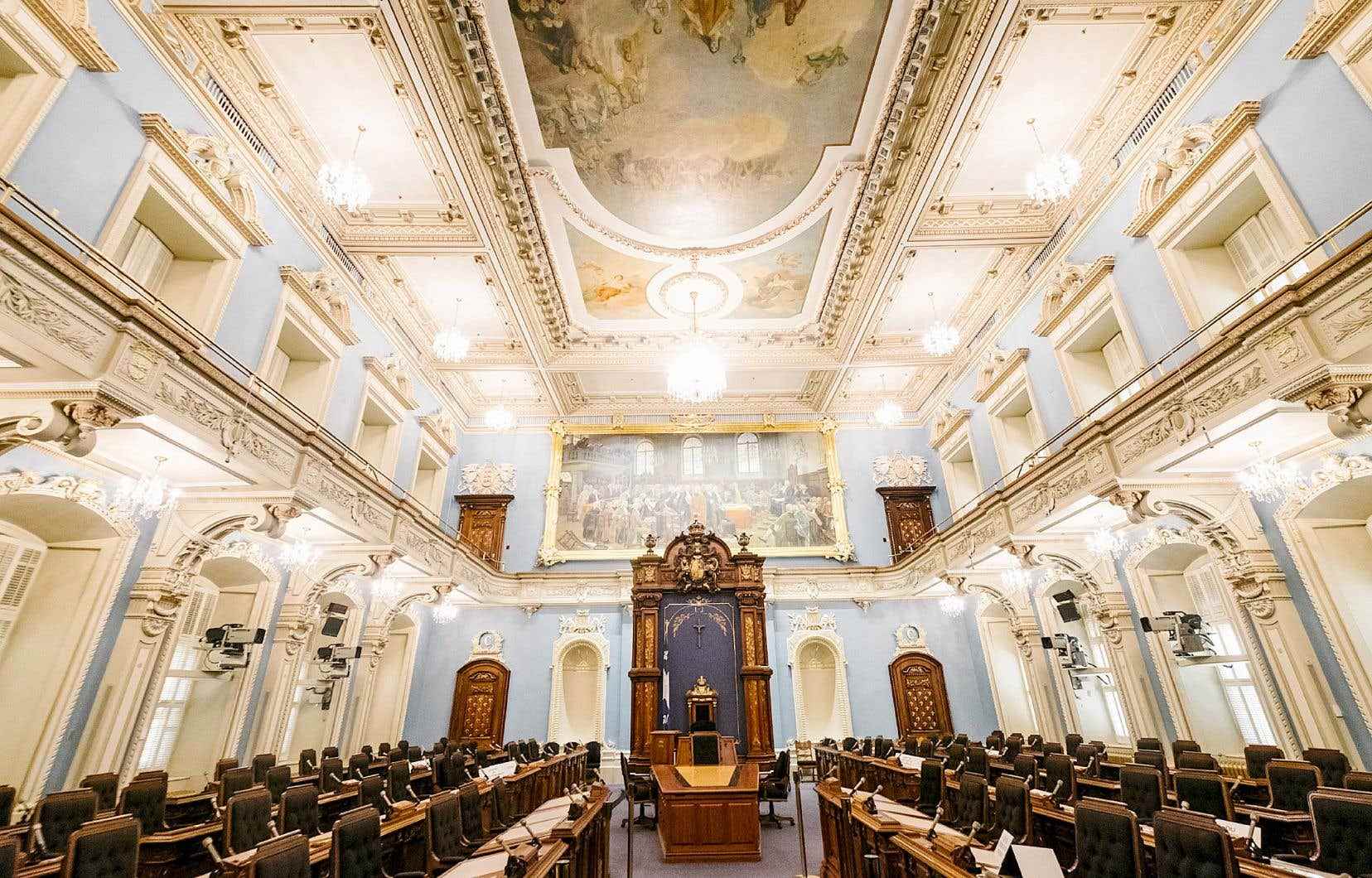Farmers, conductors, environmental and tourism specialists… Professions from all walks of life are multiplying at the Salon Bleu, but elected municipal officials occupy more than ever a place of choice in the 43e legislatednature of the Parliament of Quebec. The duty portrays it.
When the doors of the Blue Room open on Tuesday, a record number of women will tread the carpet in the hall of the National Assembly. This year, 58 of them were elected, ie 46.4% of the deputation.
Their representation in the Quebec Parliament has almost never ceased to advance over the past forty years. The presence of MNAs is eight times greater than when the second government of René Lévesque was elected in 1981.
But that’s not all. On the professional level too, a considerable change is taking place at the top of Parliament Hill. Formerly an ulterior motive, the position of elected municipal official (mayor, prefect, councillor, etc.) leads, more than any other job, to the doors of the National Assembly.
If the CAQ wants to seek a third term, that would be very wise [de continuer à travailler sur la représentativité de son caucus].
According to the calculations of To have to, no less than 17 of the members of the current legislature were working in municipal politics when they made the leap into the Quebec parliamentary arena. This represents 13.6% of the 125 deputies in office.
This total is up more than 50% from the last Parliament. Only ten years ago, the elected municipal officials were five to populate the benches of the Blue Room. Thirty years ago, two.
“From the moment we prohibited the accumulation of functions, […] it may have provoked the abstention of people from the municipal sector, ”notes historian Gaston Deschênes, specialist in the Parliament of Quebec. It took some time before they became interested in provincial politics again.
According to the assistant professor of political science at Laval University Valérie-Anne Mahéo, this wave could allow certain new files to find a place in the National Assembly in the next four years. “There are certain issues of transportation, public transit, economy and environment, too,” she lists.
business leads
The Coalition avenir Québec wears its party hat of entrepreneurs well. Of the 14 elected members of the current legislature to have worked in the business world before entering politics, 13 belong to the CAQ family. Prime Minister François Legault is one of them, his “superminister” of the Economy and Energy, Pierre Fitzgibbon, too.
As for lawyers, who have historically taken an important place in the composition of parliaments, they occupy less and less space. There were twenty-two legal professionals in 2003. Despite a slight resurgence compared to the last mandate, there are now twelve.
“If you go back to before the Quiet Revolution, there were a lot of them. It was probably the most represented professional body,” emphasizes Gaston Deschênes.
The 43e legislature, composed on October 3, counts among its ranks elected officials from all professional backgrounds. The new CAQ MP for the Côte-du-Sud riding, Mathieu Rivest, is a conductor. His colleague Audrey Bogemans comes from an agricultural background. Liberal Sona Lakhoyan Olivier previously worked at the Casino de Montreal.
There are also more and more environmental specialists. And of the four MPs who worked in the field before becoming politicians, three represent Québec solidaire.
“The more a group is homogeneous, the more difficulty it has in being creative in decision-making or in translating into action [commentaires] coming from civil society”, observes sociologist Frédérick Guillaume Dufour, according to whom the multiplication of atypical paths in the National Assembly allows a better representation of the Quebec population.
“If I think of an orchestra conductor, for example, he will find it easy to mobilize people in the cultural network. A farmer, to get information from other farmers. A lawyer might not be able to find [cette information] or perhaps would not have the same credibility,” continues Mr. Dufour, professor in the Department of Sociology at the Université du Québec à Montréal.
Valérie-Anne Mahéo also notes that a more representative National Assembly makes it possible to attract more Quebecers to politics.
“Seeing different people, with different backgrounds, different experiences, different characteristics, can send the message to the population that different types of people have their place in the National Assembly, in politics. It can reassure some people because their voice will be heard, ”she says.
Still a long way to go
Parliament has long been — and still is — a preserve for some Quebecers, observes Gaston Deschênes. “Workers, you don’t have many. We had Maurice Bellemare who was a brakeman on a train, then Antonio Barrette, who was a railway employee, but there are very few people of this type, ”he says.
Also in terms of age: the average elected member of the National Assembly is almost eight years older (50.7 years) than the average Quebecer (42.9 in 2021). Visible minorities make up about 10% of the legislature. During the Canadian census in 2016, racialized Quebecers accounted, in comparison, for 14% of the population.
“If the CAQ wants to seek a third term, it would be very wise” to continue to work on the representativeness of its caucus, reports Frédérick Guillaume Dufour. The appointment of a first indigenous person to a Council of Ministers – in the person of Kateri Champagne Jourdain – is a first step forward, he notes.
With Laurianne Croteau
